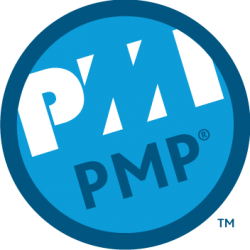Usually the different processes “gathering requirements”, “define scope” and “break down wbs” are separate sequential activities which consume dedicated effort and provide different deliverables. The main input apart from the project charter is the list of stakeholders. For us it was essential to squeeze these activities as we already decided on the general approach for iterative project structure.
Knowing that the full usage of the method would overload our team, we needed to tailor the necessary process steps to be able to receive a break down of the requirements list which could be used for further activity planning.
The relevant stakeholders for scope management were a subset of the identified full list: the trustee management, teachers and the principal. Alignment on main topics was already achieved with the trustee management via the project charter. So we had to answer two questions:
- How to derive the detailed scope from the input of other stake holders?
- How to handle the specifics of authority driven society?
The best fitting approach in this situation was a requirements planning workshop with the team. Finally we were following a 4-step approach:
Step 1: Identify the possible scope areas
- Each stakeholder should write down on separate file cards:
- 3 things they like at school
- 3 things they think, which could be improved
Step 2: Explaine the possible areas
- Each stakeholder should explain and pin down his topics
- Double topics will be clustered
Step 3: Structure the input
- All topics will be commonly divided into two groups
- Group 1 – Investment topics
- Topics which are mainly dependent on investments like:
- Construction, school material
- Computers/Laptops
- Topics which are mainly dependent on investments like:
- Group 2 – Change topics
- Topics which can be addressed by setting up activities like:
- Training for teachers
- Preparing and using material
- Topics which can be addressed by setting up activities like:
- Group 1 – Investment topics
Step 4: Further break down and planning of activities
- All investment topics will be stored as to be planned donation and tracked separately
- For all change topics small project teams to be set up:
- 2-3 team members (each supported and extended by management and project management)
- One week schedule for possible solution to be designed
- Each approach will be shared with the stakeholders At come back workshop
Result
By this approach we could gather relevant prioritised topics which should be scope of our work. We achieved common understanding and alignment as well as buy in for the next activities by our main stakeholders. The used method was excellent for the given social and hierarchical situation as we were able to receive input from the lower hierarchical level.
Lessons learned
- Good preparation for gathering of requirements is a must.
- Social and cultural environment need to be taken into account to choose the proper method for gathering of requirements.
- Metaplan methods can be used even in very rural environment without any technical support.

